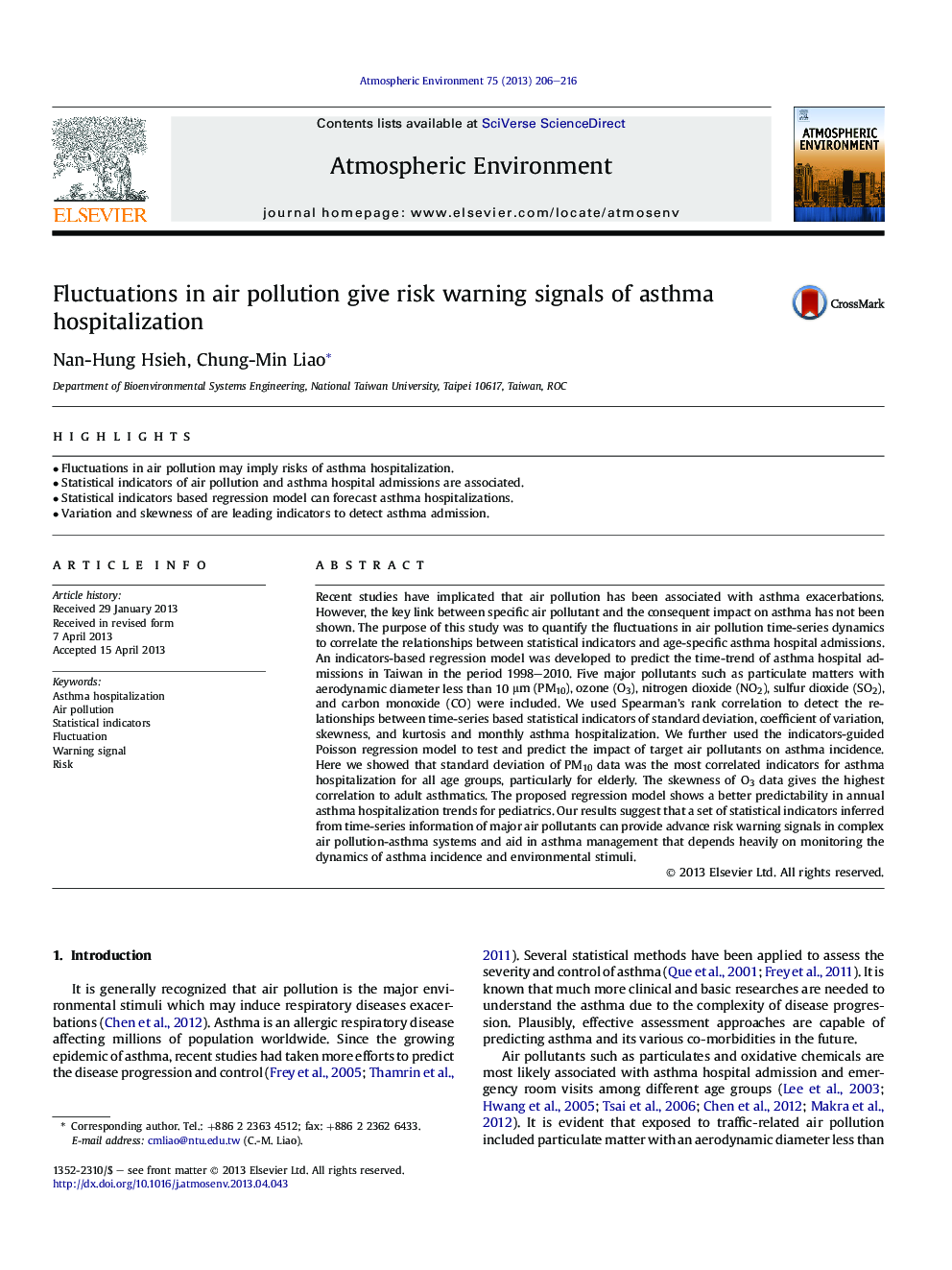| Article ID | Journal | Published Year | Pages | File Type |
|---|---|---|---|---|
| 6341874 | Atmospheric Environment | 2013 | 11 Pages |
Abstract
Recent studies have implicated that air pollution has been associated with asthma exacerbations. However, the key link between specific air pollutant and the consequent impact on asthma has not been shown. The purpose of this study was to quantify the fluctuations in air pollution time-series dynamics to correlate the relationships between statistical indicators and age-specific asthma hospital admissions. An indicators-based regression model was developed to predict the time-trend of asthma hospital admissions in Taiwan in the period 1998-2010. Five major pollutants such as particulate matters with aerodynamic diameter less than 10 μm (PM10), ozone (O3), nitrogen dioxide (NO2), sulfur dioxide (SO2), and carbon monoxide (CO) were included. We used Spearman's rank correlation to detect the relationships between time-series based statistical indicators of standard deviation, coefficient of variation, skewness, and kurtosis and monthly asthma hospitalization. We further used the indicators-guided Poisson regression model to test and predict the impact of target air pollutants on asthma incidence. Here we showed that standard deviation of PM10 data was the most correlated indicators for asthma hospitalization for all age groups, particularly for elderly. The skewness of O3 data gives the highest correlation to adult asthmatics. The proposed regression model shows a better predictability in annual asthma hospitalization trends for pediatrics. Our results suggest that a set of statistical indicators inferred from time-series information of major air pollutants can provide advance risk warning signals in complex air pollution-asthma systems and aid in asthma management that depends heavily on monitoring the dynamics of asthma incidence and environmental stimuli.
Related Topics
Physical Sciences and Engineering
Earth and Planetary Sciences
Atmospheric Science
Authors
Nan-Hung Hsieh, Chung-Min Liao,
